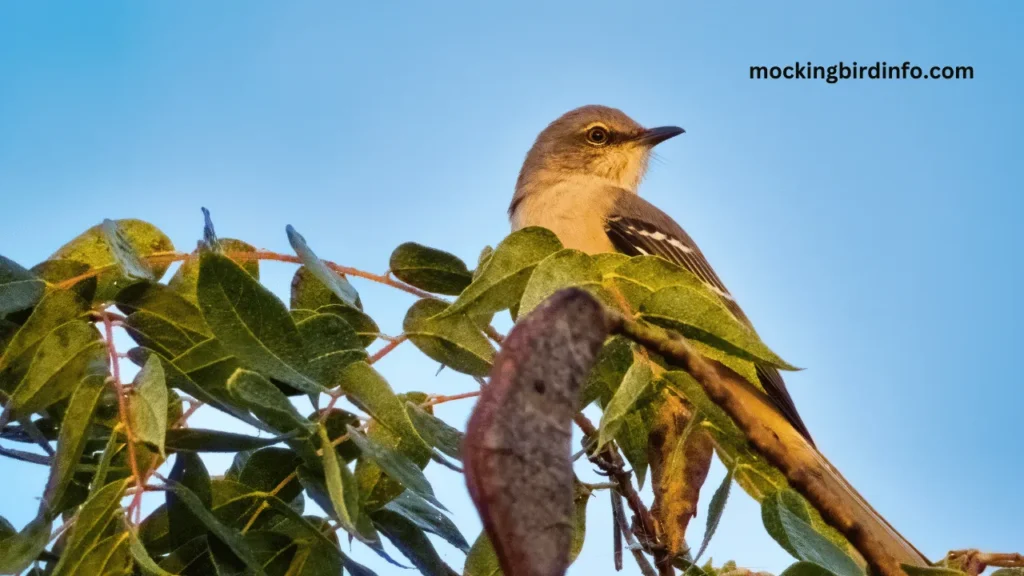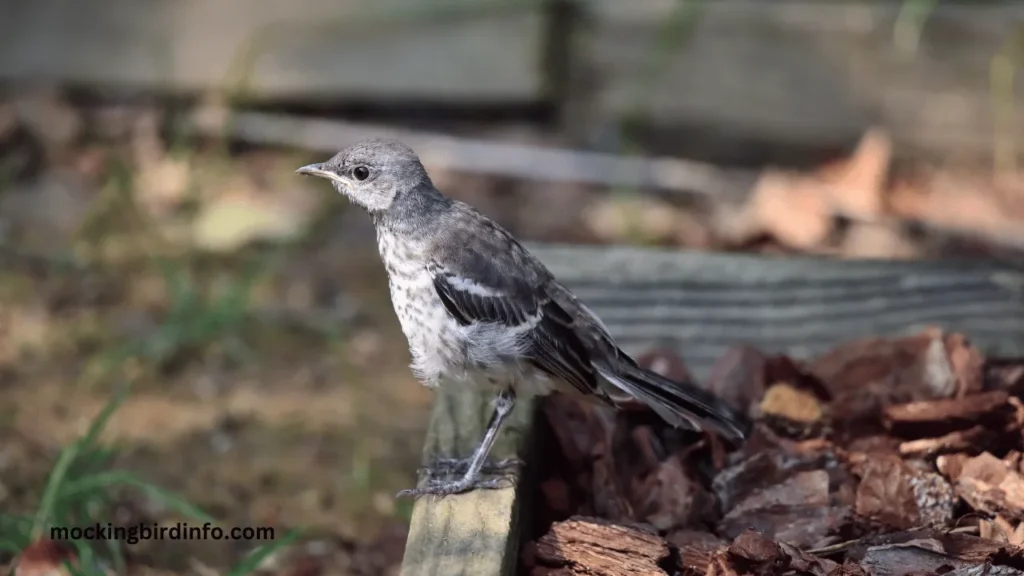Have you ever walked through a neighborhood on a warm spring day, only to feel the rush of wings and hear a cacophony of sharp cries as a bird swoops down from nowhere? That bird was likely a mockingbird, fiercely guarding its territory.
These birds are known for their bold, unyielding behavior and unparalleled mimicry. Yet beneath their charming vocal displays lies a surprisingly aggressive nature that raises questions about how far their territorial instincts extend.
The question of whether mockingbirds kill other birds is more than just an interesting quirk of nature. It has deep implications for the balance of local ecosystems, bird population dynamics, and the survival of smaller, more vulnerable bird species.
Understanding these behaviors helps bird enthusiasts, ecologists, and urban planners better appreciate how mockingbirds interact with their surroundings and the ripple effects on other wildlife.
This article delves into the factors influencing mockingbird aggression, the tactics they employ to defend their territory, and the impact on other bird populations. By the end, you’ll have a clearer picture of the role mockingbirds play in their ecosystems and what it means for their feathered neighbors.

Contents
- 1 Factors Influencing Aggressive Behavior
- 2 Ecological Role of Mockingbirds
- 3 Conclusion
- 4 FAQs
- 4.1 1. Do mockingbirds typically kill other birds?
- 4.2 2. Why are mockingbirds so aggressive?
- 4.3 3. Are mockingbirds aggressive toward humans?
- 4.4 4. How do mockingbirds defend their territory?
- 4.5 5. Do mockingbirds only attack during the breeding season?
- 4.6 6. Can mockingbird behavior affect bird populations?
Factors Influencing Aggressive Behavior
Breeding Season is a time when mockingbirds transform from skilled songsters into relentless defenders. During this period, their aggression peaks as they fiercely protect their nests and offspring.
Male mockingbirds are especially territorial, confronting any potential threat with bold attacks. This defense ensures that their young grow up in a safe environment, free from predators and competing species.
Territorial Defense plays a crucial role in a mockingbird’s life. These birds claim patches of land as their own, which provide access to essential resources like food, water, and shelter. The more desirable the territory, the more aggressively it is defended.
Intruders, whether birds or other animals, are quickly met with a show of force, underscoring the importance of territory for the mockingbird’s survival and reproductive success.
Food Availability can also influence how combative mockingbirds become. During times of scarcity, they are more likely to see smaller birds as competition, leading to more frequent conflicts.
In urban environments where food sources like insects and berries might be limited, this competition can trigger heightened territorial behavior, pushing mockingbirds to defend their space at all costs.
Specific Tactics Employed by Mockingbirds
Mockingbirds are adept at employing a range of tactics to ward off intruders. One of the most startling methods is their aerial attacks, where they dive-bomb other birds or even humans. This high-speed, precision swooping is designed to scare off potential threats and assert dominance over their territory.
Vocal Displays are another significant tool in a mockingbird’s defensive arsenal. These birds are known for their loud and varied songs, which serve as a warning signal to other creatures.
A mix of chirps, trills, and calls mimicking different species helps dissuade intruders and reinforce their territorial claim. The more complex and persistent the song, the more likely it is to deter an unwelcome guest.
For closer encounters, mockingbirds don’t shy away from physical confrontations. They are known to engage in aggressive pecking, biting, and even chasing other birds away. This behavior is particularly intense during the breeding season when they are most protective of their nests.
In extreme cases, these interactions can result in the injury or death of smaller, weaker birds.

Impact on Bird Populations
The aggressive nature of mockingbirds can significantly affect mortality rates among smaller bird species. During the breeding season, the heightened territorial behavior often puts hatchlings and weaker birds at risk.
Although direct killings are not always common, fatal altercations do occur when competing for space or food. Nest predation is another aspect that plays into the impact of mockingbirds on other birds.
While mockingbirds primarily defend their nests, they may also raid the nests of rival birds to eliminate competition. This aggressive tactic can reduce the success rate of other species’ breeding attempts, leading to long-term population changes.
Habitat competition caused by mockingbird aggression can restrict smaller birds’ access to essential resources like nesting sites and food. This competition can limit the diversity of bird species in a given area, making it harder for less aggressive species to thrive.
The end result is a shift in the local ecosystem, where only the most adaptable or elusive birds can coexist alongside mockingbirds.
Ecological Role of Mockingbirds
While their aggressive behavior can seem harsh, mockingbirds play a significant role in maintaining ecological balance. Their territorial nature helps control pest populations, as mockingbirds often feed on insects and small invertebrates. This natural pest control benefits the environment and aids gardeners and farmers by reducing the need for chemical pesticides.
Mockingbirds also serve as seed dispersers. As they feed on berries and fruits, they spread seeds across their territory, promoting plant diversity. This ecological service can create more vibrant habitats, indirectly supporting other species that rely on varied plant life.
Despite their aggressive nature, mockingbirds’ contributions to the ecosystem underscore their importance. Their behavior fosters a dynamic balance that, while challenging for smaller bird species, keeps the local environment robust and adaptive.
Conclusion
Mockingbirds are more than just songbirds; they are guardians of their territory with a fiercely defensive streak. Understanding their aggressive behavior sheds light on the complex ways in which they interact with their environment and influence other bird species.
While their actions can lead to conflict, sometimes resulting in fatalities among smaller birds, they also contribute to pest control and seed dispersal, balancing their reputation as both predator and protector.
For those who observe birds or manage natural spaces, it’s essential to appreciate the dual role of mockingbirds. Their behavior, rooted in survival and territorial instincts, highlights the intricacies of nature’s balance.
Further research can help us better understand the broader impacts of their aggression and how to ensure harmony in bird communities. Ultimately, mockingbirds remind us of the fine line between survival-driven instincts and the consequences they impose on their neighbors.
FAQs
1. Do mockingbirds typically kill other birds?
Yes, while it is rare, mockingbirds can kill smaller birds during territorial fights, particularly in the breeding season.
2. Why are mockingbirds so aggressive?
Mockingbirds display aggressive behavior primarily to defend their territory, nests, and food resources, ensuring the survival of their young.
3. Are mockingbirds aggressive toward humans?
Yes, mockingbirds may attack humans who come too close to their nests, as they see them as potential threats.
4. How do mockingbirds defend their territory?
Mockingbirds use aerial attacks, vocal displays, and physical confrontations to guard their territory.
5. Do mockingbirds only attack during the breeding season?
Mockingbird aggression is most intense during breeding, but they can defend their territory year-round.
6. Can mockingbird behavior affect bird populations?
Yes, their aggressive nature can impact mortality rates and habitat competition, influencing bird diversity in an area.








